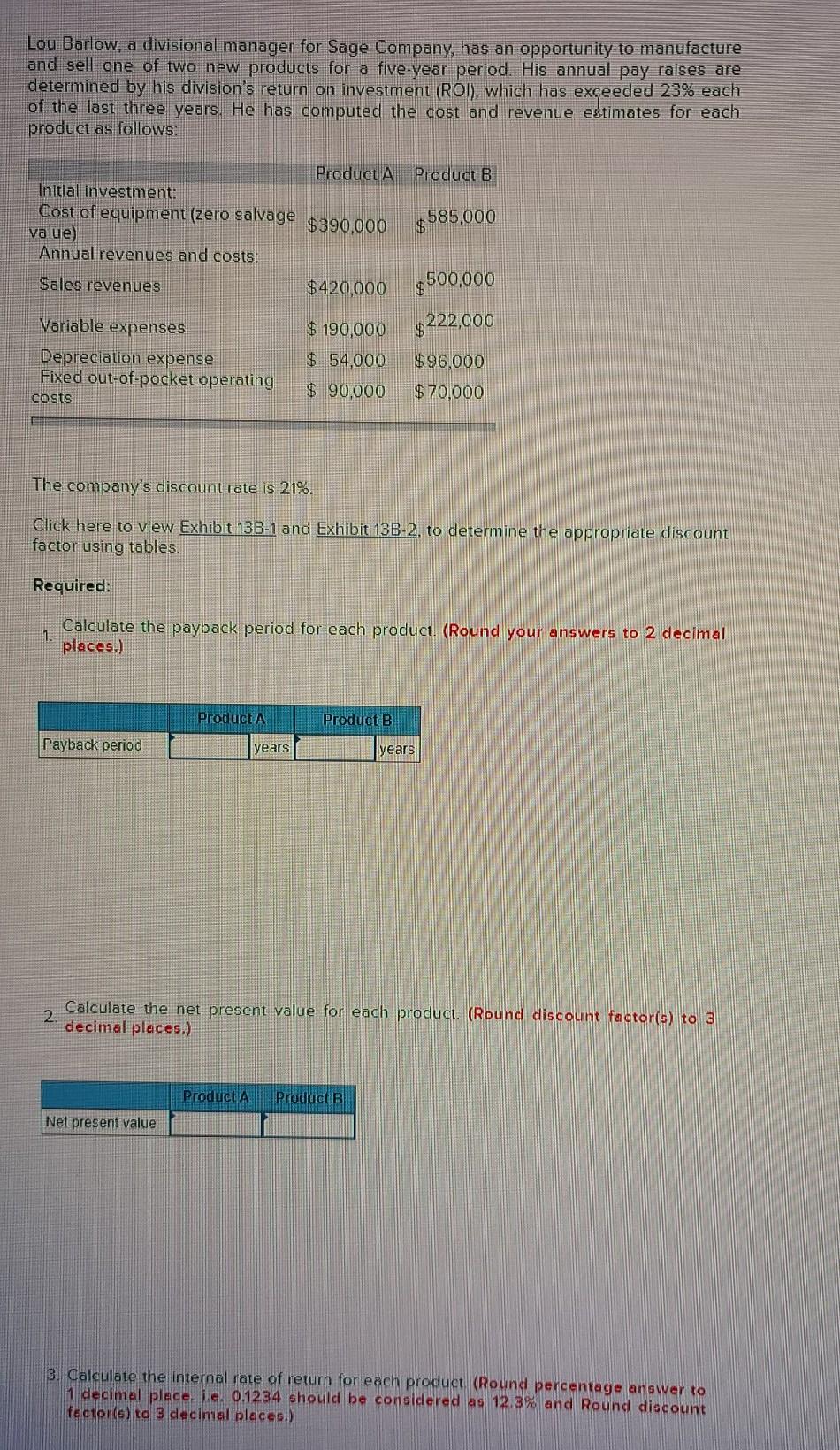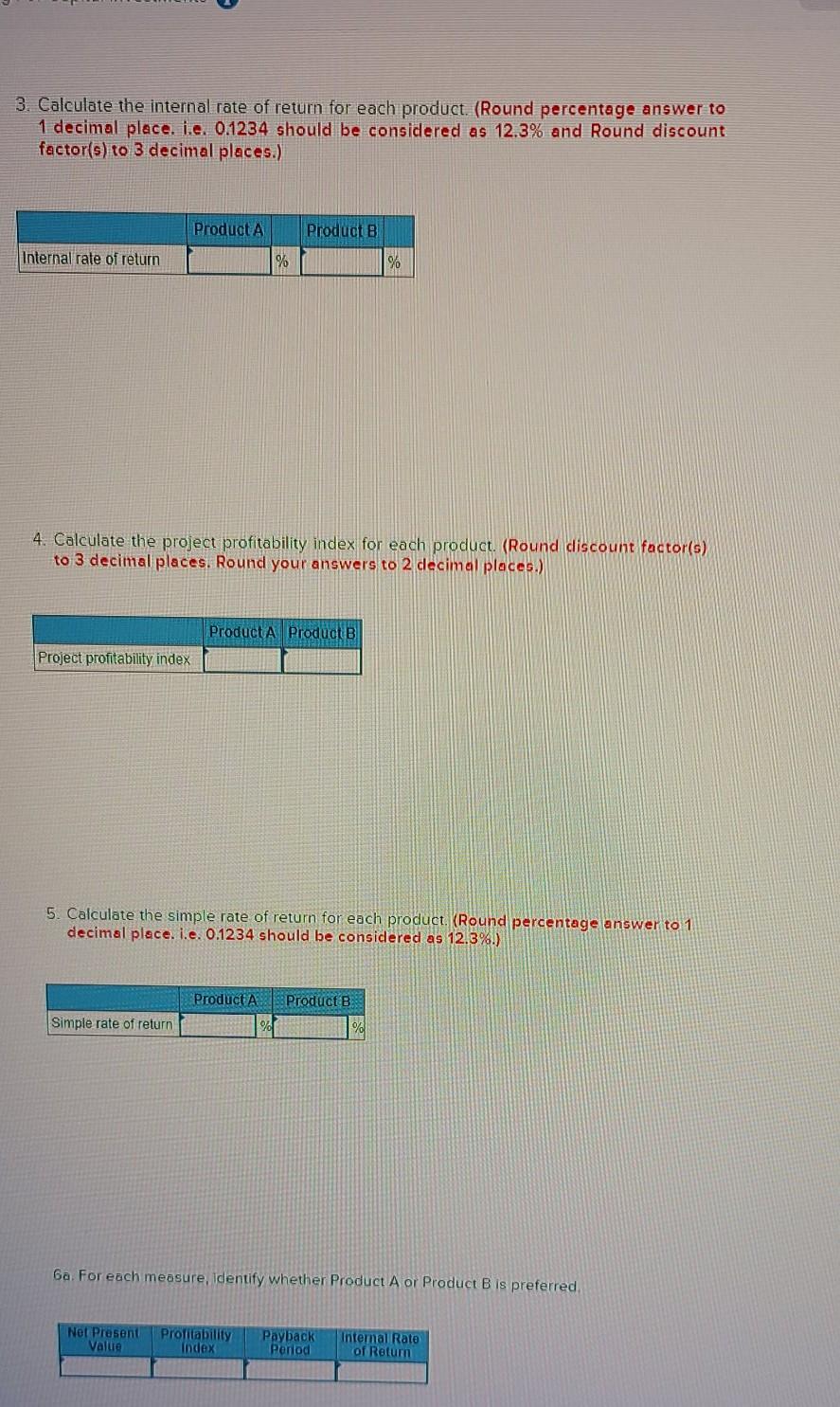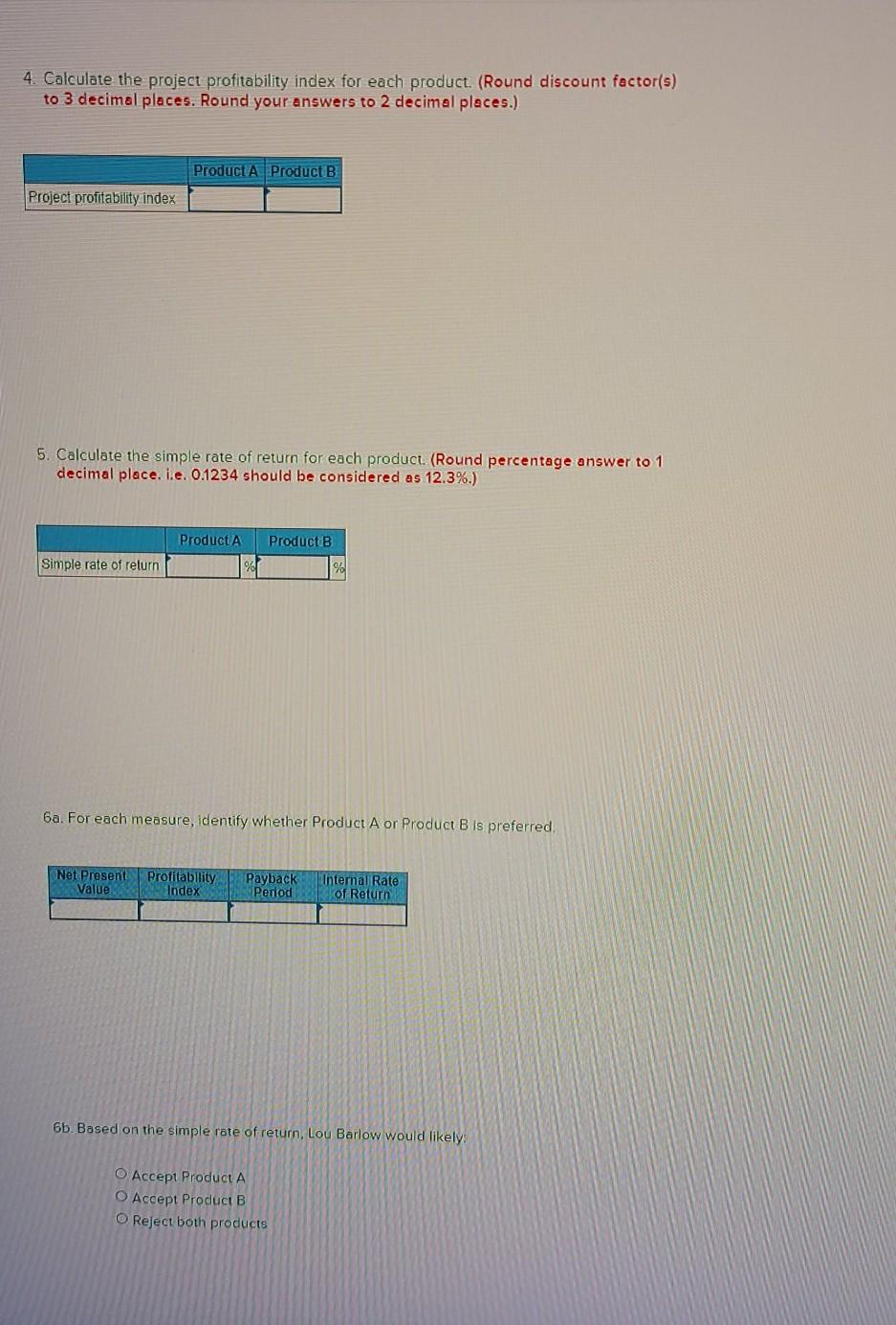Answered step by step
Verified Expert Solution
Question
1 Approved Answer
Lou Barlow, a divisional manager for Sage Company, has an opportunity to manufacture and sell one of two new products for a five-year period. His



Lou Barlow, a divisional manager for Sage Company, has an opportunity to manufacture and sell one of two new products for a five-year period. His annual pay raises are determined by his division's return on investment (ROI), which has exceeded 23% each of the last three years. He has computed the cost and revenue estimates for each product as follows $585,000 Product A Product B Initial investment: Cost of equipment (zero salvage $390,000 value) Annual revenues and costs: Sales revenues $420,000 Variable expenses $ 190,000 $222,000 Depreciation expense $ 54,000 $ 96,000 Fixed out-of-pocket operating $ 90,000 $ 70,000 costs $500,000 The company's discount rate is 21% Click here to view Exhibit 13B-1 and Exhibit 13B-2, to determine the appropriate discount factor using tables. Required: 1. Calculate the payback period for each product. (Round your answers to 2 decimal places.) Product A Product B Payback period years years Calculate the net present value for each product. (Round discount factor(s) to 3 2. decimal places.) Product A Product B Net present value 3. Calculate the internal rate of return for each product (Round percentage answer to 1 decimal place. ie. 0.1284 should be considered as 12.3% and Round discount factor(s) to 3 decimal places.) 3. Calculate the internal rate of return for each product. (Round percentage answer to 1 decimal place. i.e. 0.1234 should be considered as 12.3% and Round discount factor(s) to 3 decimal places.) Product A Product B Internal rate of return % 4. Calculate the project profitability index for each product. (Round discount factor(s) to 3 decimal places. Round your answers to 2 decimal places.) Product Product Project profitability index 5. Calculate the simple rate of return for each product. (Round percentage answer to 1 decimal place. i.e. 0.1234 should be considered as 12.3%.) Product A Product B Simple rate of return 6a. For each measure, identify whether Product A or Product B is preferred Net Present Value Profitability Index Payback Period Intemal Rate of Retum 4. Calculate the project profitability index for each product. (Round discount factor(s) to 3 decimal places. Round your answers to 2 decimal places.) Product A Product B Project profitability index 5. Calculate the simple rate of return for each product. (Round percentage answer to 1 decimal place. i.e. 0.1234 should be considered as 12.3%.) Product A Product B Simple rate of relurn 6a. For each measure, identify whether Product A or Product B is preferred Net Present Profitability Value Index Payback Period Internal Rate of Return 6b. Based on the simple rate of return, Lou Barlow would likely: O Accept Product A O Accept Product B O Reject both products
Step by Step Solution
There are 3 Steps involved in it
Step: 1

Get Instant Access to Expert-Tailored Solutions
See step-by-step solutions with expert insights and AI powered tools for academic success
Step: 2

Step: 3

Ace Your Homework with AI
Get the answers you need in no time with our AI-driven, step-by-step assistance
Get Started


